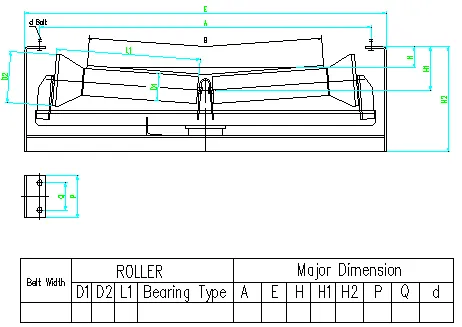 Afrikaans
Afrikaans  Albanian
Albanian  Amharic
Amharic  Arabic
Arabic  Armenian
Armenian  Azerbaijani
Azerbaijani  Basque
Basque  Belarusian
Belarusian  Bengali
Bengali  Bosnian
Bosnian  Bulgarian
Bulgarian  Catalan
Catalan  Cebuano
Cebuano  Corsican
Corsican  Croatian
Croatian  Czech
Czech  Danish
Danish  Dutch
Dutch  English
English  Esperanto
Esperanto  Estonian
Estonian  Finnish
Finnish  French
French  Frisian
Frisian  Galician
Galician  Georgian
Georgian  German
German  Greek
Greek  Gujarati
Gujarati  Haitian Creole
Haitian Creole  hausa
hausa  hawaiian
hawaiian  Hebrew
Hebrew  Hindi
Hindi  Miao
Miao  Hungarian
Hungarian  Icelandic
Icelandic  igbo
igbo  Indonesian
Indonesian  irish
irish  Italian
Italian  Japanese
Japanese  Javanese
Javanese  Kannada
Kannada  kazakh
kazakh  Khmer
Khmer  Rwandese
Rwandese  Korean
Korean  Kurdish
Kurdish  Kyrgyz
Kyrgyz  Lao
Lao  Latin
Latin  Latvian
Latvian  Lithuanian
Lithuanian  Luxembourgish
Luxembourgish  Macedonian
Macedonian  Malgashi
Malgashi  Malay
Malay  Malayalam
Malayalam  Maltese
Maltese  Maori
Maori  Marathi
Marathi  Mongolian
Mongolian  Myanmar
Myanmar  Nepali
Nepali  Norwegian
Norwegian  Norwegian
Norwegian  Occitan
Occitan  Pashto
Pashto  Persian
Persian  Polish
Polish  Portuguese
Portuguese  Punjabi
Punjabi  Romanian
Romanian  Russian
Russian  Samoan
Samoan  Scottish Gaelic
Scottish Gaelic  Serbian
Serbian  Sesotho
Sesotho  Shona
Shona  Sindhi
Sindhi  Sinhala
Sinhala  Slovak
Slovak  Slovenian
Slovenian  Somali
Somali  Spanish
Spanish  Sundanese
Sundanese  Swahili
Swahili  Swedish
Swedish  Tagalog
Tagalog  Tajik
Tajik  Tamil
Tamil  Tatar
Tatar  Telugu
Telugu  Thai
Thai  Turkish
Turkish  Turkmen
Turkmen  Ukrainian
Ukrainian  Urdu
Urdu  Uighur
Uighur  Uzbek
Uzbek  Vietnamese
Vietnamese  Welsh
Welsh  Bantu
Bantu  Yiddish
Yiddish  Yoruba
Yoruba  Zulu
Zulu Understanding the Mechanics and Applications of Drive Belts and Pulleys in Various Systems
Understanding Drive Belts and Pulleys The Essentials of Power Transmission
Drive belts and pulleys are vital components in various mechanical systems, widely used in industries ranging from automotive to manufacturing. Their primary function is to transmit power from one part of a machine to another while providing a flexible and efficient means of transferring rotational motion.
What are Drive Belts?
Drive belts are looped materials typically made from rubber, but they can also be constructed from polymers, leather, or composite materials. These belts are designed to connect two or more rotating shafts, transferring power through friction. They come in different types, including V-belts, flat belts, and synchronous belts, each serving specific applications based on their design and working principles.
V-Belts are the most common type used in many applications due to their efficiency and ability to handle a variety of loads. Their trapezoidal shape allows them to grip pulleys effectively, reducing slippage while providing firm traction. A Flat Belt, on the other hand, features a simple rectangular cross-section and is often used in applications requiring a long distance between pulleys, such as conveyor systems.
Synchronous Belts (or timing belts) feature teeth that fit into grooves on the pulleys, ensuring that they maintain their position and do not slip. This makes them ideal for applications where precise timing is essential, such as in engine timing systems.
The Role of Pulleys
Pulleys, on the other hand, are wheel-like components that provide a surface for the belt to travel over. They can come in various shapes and sizes, and their design directly influences the efficiency of power transmission. Pulleys are categorized based on their functions drive pulleys, driven pulleys, and idler pulleys.
A Drive Pulley is connected to the power source, such as a motor, while a Driven Pulley is connected to the component requiring motion, such as a fan or conveyor. Idler Pulleys are used to guide the belt, maintain proper tension, and ensure smooth operation.
drive belts and pulleys

Applications in Industry
The use of drive belts and pulleys is prevalent in various industries. In the automotive sector, these components play a crucial role in transmitting power from the engine to other parts, like alternators and water pumps. In manufacturing, they are essential in conveyor systems, allowing for the movement of materials across production lines.
Moreover, drive belts and pulleys provide advantages such as reduced noise levels and less vibration compared to direct coupling methods. This contributes to a smoother operation, enhancing the lifespan of the machinery.
Advantages of Using Drive Belts and Pulleys
One of the primary advantages of using drive belts and pulleys is their ability to accommodate misalignment within machinery. This flexibility can decrease maintenance costs and downtime because it mitigates the need for precise alignment of components. Additionally, belts can absorb shock loads, offering better protection for the machines they operate.
Furthermore, drive belts and pulleys allow for speed variation. By changing the size and arrangement of the pulleys, operators can achieve different output speeds and torques, making the system adaptable to various operational requirements.
Conclusion
In summary, drive belts and pulleys are integral to numerous mechanical systems, providing an efficient, cost-effective solution for power transmission. Their versatility and adaptability make them indispensable in various industries, ensuring that machinery operates smoothly and effectively. Understanding the intricacies of these components can enhance maintenance strategies and improve overall operational efficiency, benefiting diverse applications across the board. Whether you're maintaining a car, running a factory, or simply curious about mechanical systems, the significance of drive belts and pulleys cannot be overstated.
-
Revolutionizing Conveyor Reliability with Advanced Rubber Lagging PulleysNewsJul.22,2025
-
Powering Precision and Durability with Expert Manufacturers of Conveyor ComponentsNewsJul.22,2025
-
Optimizing Conveyor Systems with Advanced Conveyor AccessoriesNewsJul.22,2025
-
Maximize Conveyor Efficiency with Quality Conveyor Idler PulleysNewsJul.22,2025
-
Future-Proof Your Conveyor System with High-Performance Polyurethane RollerNewsJul.22,2025
-
Driving Efficiency Forward with Quality Idlers and RollersNewsJul.22,2025





























